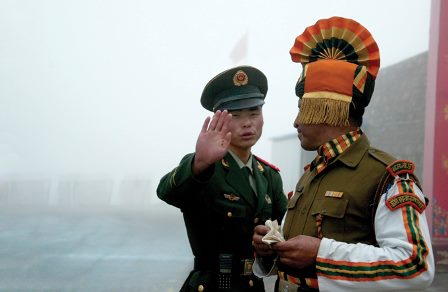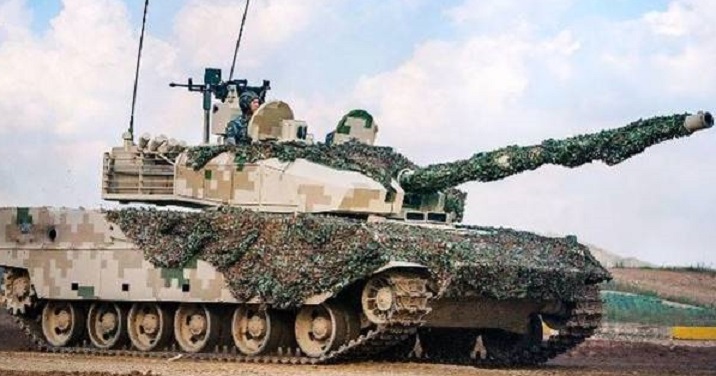IDR Blog
Modi-Xi agenda: Work for 'Hindi-Chini buy-buy'
Prime Minister Narendra Modi is receiving the visiting Chinese President Xi Jinping in Ahmedabad on the former’s birthday. If symbolism mirrored reality, then we should see the birth of new relations between India and China under the two leaders.
Relations between countries marred by conflict and distrust cannot, however, change abruptly unless new challenges emerge, surpassing bilateral differences, and a strategic shift becomes necessary to cope with them together.
China is concerned about our growing strategic ties with the US and Japanese Prime Minister Shinzo Abe’s wooing of India.
In our case, the fundamentals of the relations have not changed. China still claims large parts of Indian territory, with new maps issued recently showing Arunachal Pradesh as Chinese territory. It has repeatedly said that the resolution of the border issue should be left to future generations. Xi has declared firmly that China will never compromise on territorial issues. China is confronting Japan and the US with its aggressive maritime claims and also intimidating its Southeast Asian neighbours as well. It seems confident that despite huge investment and trade ties with Japan and the United States and the vulnerability of its export-based economy in a conflict situation, it can assert its regional hegemony incrementally. Why should it be more accommodating with India when the cost of strong-arming us is much less?
China’s territorial provocations — even questioning our sovereignty over Jammu and Kashmir — have occurred even as our Special Representatives (SRs) have been talking of solutions. China has hollowed out the original mandate of the SRs to ‘politically’ resolve the border issue by extending its scope to the entire gamut of relations. We should wind up the SR mechanism and revert to the exercise earlier agreed upon — unilaterally renounced by the Chinese — to define on the ground the Line of Actual Control so that repeated atmosphere-fouling ‘incidents’ on the border are avoided.
Ironically, our attachment to ‘strategic autonomy’ gives China a freer hand to calibrate the levels of friendliness and tensions with us as opportune because, behind us, they are not confronting any alliance arrangement. China’s interest is to encourage us to pursue an independent foreign policy. It is concerned about our growing strategic ties with the US and Japanese Prime Minister Shinzo Abe’s wooing of India. Its current smiling-face diplomacy towards us is to raise our awareness of the opportunity cost of discounting China in favour of Japan, besides encouraging us to distance ourselves from the US re-balancing towards Asia. Paradoxically, if there is concern that closer strategic ties with the US and Japan may leave us open to more Chinese pressure on the border, our independent posture actually relieves China of any pressure to resolve the border issue.
China’s strongest card in international relations, as the world’s largest exporter with humungous reserves of $3.8 trillion, is the economic one.
China will not dilute its strategic ties with Pakistan in order to build bridges with us. If we could not persuade even the US to cease bolstering Pakistan, how can we expect China to heed our sensitivities? Pakistan and Pak-occupied Kashmir play a key part in China’s ‘connectivity’ strategy to our west. Through nuclear cooperation with Pakistan, China balances strategically the India-US nuclear deal. China’s intrusions into our broader neighbourhood will remain a challenge for us.
All this does not preclude India and China working together in areas of common interests, whether on climate change and WTO issues, in BRICS and the Russia-India-China format, at the G20 and Shanghai Cooperation Organisation. Both countries have interests in reforming the international financial institutions. But then, the biggest beneficiary of a shift of power to Asia is China. Our dilemma is whether an increasingly strong China sitting atop us is better for us than the erosion of the West’s long domination of global affairs necessary for a more equitable international system.
China’s strongest card in international relations, as the world’s largest exporter with humungous reserves of $3.8 trillion, is the economic one. It has built enormous capacities in infrastructure and India, with its poor infrastructure and in desperate need of upgrading, is a huge market. India-China economic relations are unbalanced, with China enjoying a huge trade surplus and restricting the entry of our internationally competitive products into the Chinese market, while capturing key areas of power and telecommunications in India. China’s investments in India remain minuscule.
Bagging projects in India, supplying equipment and financing Indian companies is not investment. Will China spend its own money to build industrial parks in India?
Modi’s development agenda and his pragmatic approach to China create opportunities for Xi to play the economic card with India more vigorously. It is unclear, however, whether China has definitively concluded that it has earned enough Indian trust to invest heavily in India, and that tensions on the border can be isolated from burgeoning economic ties. Talk of China investing $100 billion in the next five years is unreal, as China’s total investment abroad so far is about $80 billion. Bagging projects in India, supplying equipment and financing Indian companies is not investment. Will China spend its own money to build industrial parks in India? We should be open to benefiting from China’s ability to undertake projects and supply equipment very competitively, but we should not start believing that if China makes more money in India, it is doing us a favour. Concepts such as the Silk Road, the Maritime Silk Route and the Bangladesh-China-India-Myanmar Economic Corridor are intended to promote China’s commercial interests and divert attention away from its disruptive territorial and maritime claims by propagating the notion that China is merely proposing cooperative moves to enhance prosperity for all.
While testing whether China’s moves towards us are strategic or tactical, we should seriously build synergies with it in areas where both sides benefit. Hindi-Chini Bhai Bhai proved illusory; Hindi-Chini Bye Bye is not feasible, given the reality of our neighbour’s powerful international role today; Hindi-Chini Buy Buy is a reasonable objective for the Modi-Xi tandem to work for. But we should not be sweet-talked again into believing a Hindi-Chini Lie Lie.
Courtesy: http://www.hindustantimes.com/
Post your Comment
4 thoughts on “Modi-Xi agenda: Work for ‘Hindi-Chini buy-buy’”
 Loading Comments
Loading Comments





This is an excellent assessment of India’s foreign policy vis a vis China, and what a contrast with what the former diplomat Bhadrakumar has been espousing in this context. Professor Chellaney has also voiced his grave concerns for Modi’s naïve bonhomie with Xi. It remains to be seen whether Modi gives the reign of devising foreign policy with China in the hands of the foreign secretaries and the Military. Here Clausewitz’s wisdom is paramount, that military power, economy and politics of a nation are locked together. If you are weak in one, you go down in the other two. Full credit to the ex-FS for coming out openly with this piece as a timely warning bell.
I think China refuses to invest their money in India.
Is Modi the Prime Minister of India or the Prime Minister (yes, this is correct) of Gujarat? Ever since he became the PM, Gujarat has seen more than it’s fair share of attention and investment. Should Modi not be receiving the chinese president in New Delhi? Why is he receiving him in Ahmedabad, Gujarat? Is Ahmedabad the capital of India?
Absolutely – great observation succinctly put !